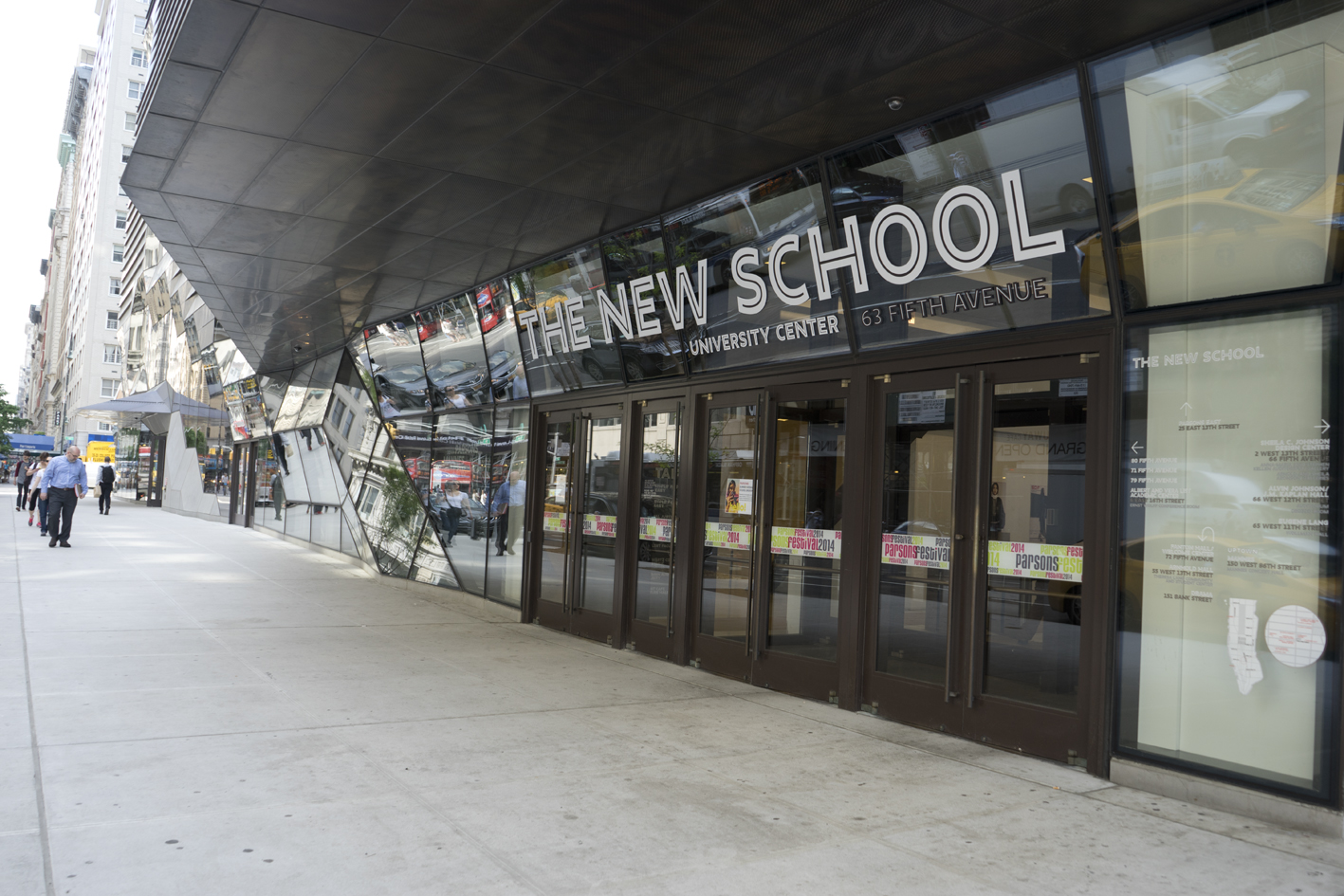
Maybe it’s too much to expect that a university present architectural entry points that are anything more than functional, in particular, in a city where square footage is at a premium. I’ve worked at Parsons for many years, mostly at 25 W. 13th where there is no lobby, just a tiny area that people crowd into and spill out of, while waiting for the interminable elevator. No expectations, no disappointments. But when a major architectural gesture is made, a new building on a major footprint on a major avenue, expectations are raised. So, when I first walked into the new University Center at 63 Fifth Avenue, I don’t know what I expected but I was shocked. My students say that the guards at the security desk look like they are “piloting the Death Star,” which is the most endearing thing I’ve heard about the space so far! Between the security turnstiles and a sort of traffic flow to nowhere feeling, it’s like a subway station corridor, albeit one that is bright, well lit, and clean, but without one of the fabulous mosaic murals that grace many subway stations.
Since the building’s interior usage has been affected by the flood this fall, I feel I am picking on an unfinished space, so let’s consider the frontage to Fifth Avenue. What an address, what a site! And what a blank face the building turns to the street at ground level. The question of what the function of an entry point to a university should be again arises: protective camouflage? Mere functionality with no pretense of architectural pleasure? Or something more? The location and occasion of the new University Center seems to call for something more. Yet, the frontage is blank. If you start from the corner of 14th Street and 5th and move south along the broad sidewalk, you’ve got the retail space—site of a future CVS—followed by a small entrance to the residence hall, then emergency exits, and finally the entrance to the lobby at the corner of 13th. I’m sure there are very sound structural/security/functional reasons for every element’s placement, but in relation to 5th Avenue, it looks like the frontage of a strip mall.
According to Michel de Certeau, people have a way of reclaiming spaces that have been designed for efficiency and control so one can only hope that people will gradually colonize the building’s entryways—the crowded thumbnail foyer at 25 W. 13th creates a weird camaraderie, and the elevator doubles as a faculty/student water cooler. But it seems that opportunities were missed to create pleasurable spaces for students and faculty to interact with each other and the city.
Are there any ways to alter the entrance to the building now that the architecture is complete?
How important is the new building’s entrance to conveying the mission and sense of the university? And/or, what mission does it convey in its current form?
In addition to the financial burden of the new building, what are the social and intellectual costs of its design on students and faculty?
Mira Schor
Faculty, Parsons The New School for Design

